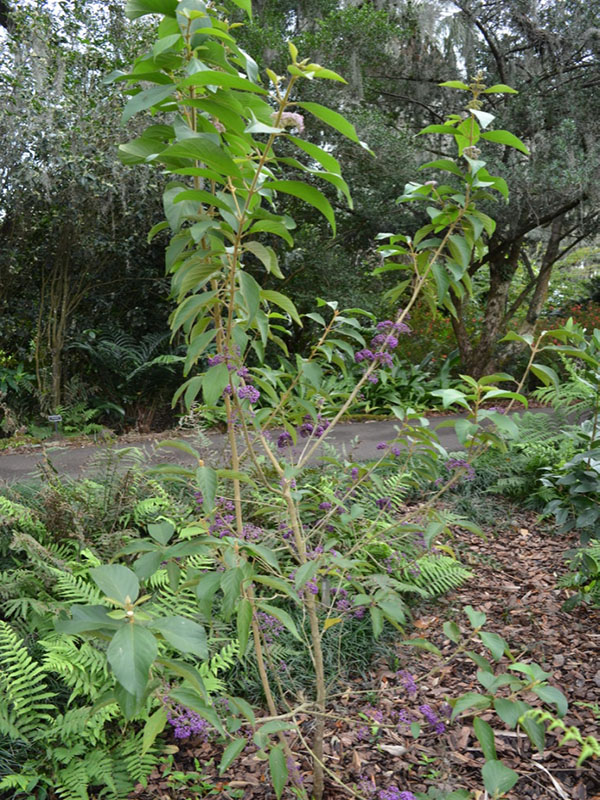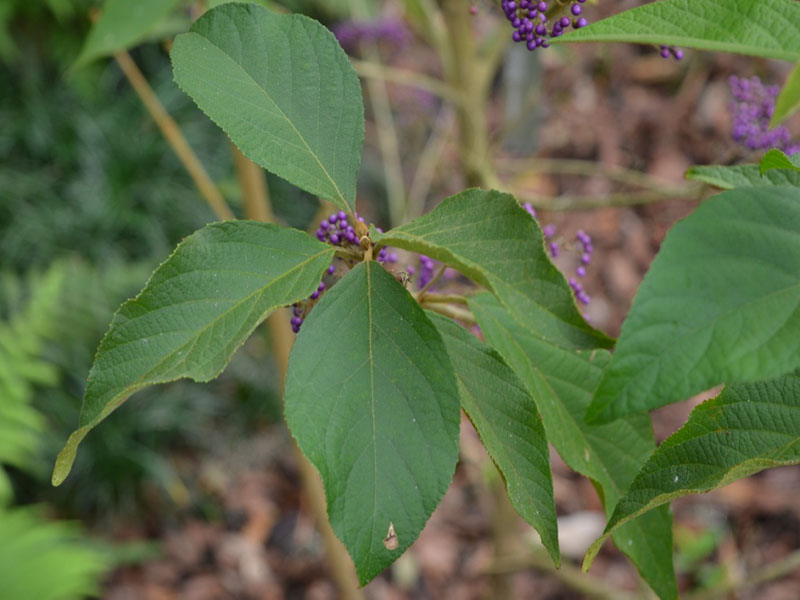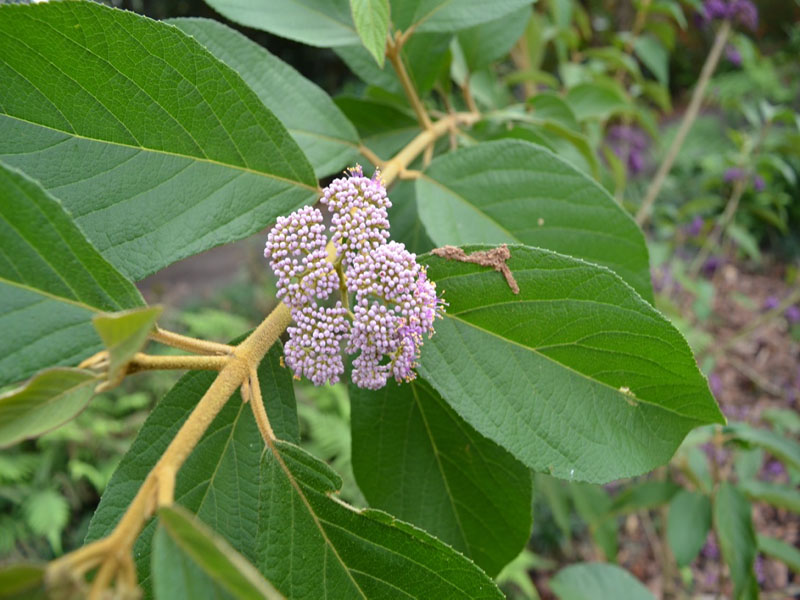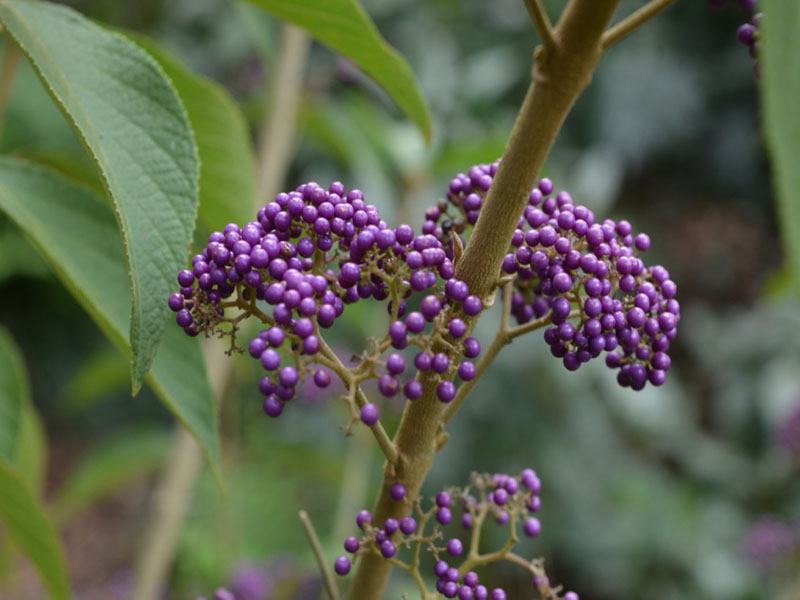Callicarpa formosana (Beautyberry)
Botanical Information
| Family | Verbenaceae |
| Genus | Callicarpa |
| Species | formosana |
| Category | Perennials |
| Type | Shrub (deciduous) |
| Origin | China, Japan, Philippines, and Taiwan. |
| Ethnobotanical Uses Disclaimer | The roots are used as an antidote for poisonous fish, crabs and toadstools, as a remedy for gonorrhoea, and as an emmenagogue. |
Details
| USDA Hardiness Zone | 9 |
| USDA Hardiness Ref. | |
| Canadian Hardiness Zone | 8 |
| Canada Hardiness Ref. | |
| RHS Hardiness Zone | H4 - H7 |
| RHS Hardiness Ref. | |
| Height | 3 m |
| Growth | Fast |
| Flowering Period | January, February, March |
Description and Growing Information
| Landscape | Generals use in parks and gardens, massing in borders. |
| Propagation | By cuttings and seed. |
| Notable Specimens | Bok Tower Gardens, Lake Wales, Florida, United States of America. |
| Habitat | Forest margins and grassland. |
| Leaf Description | Leaves are ovate to elliptical (oval) or oblong-lanceolate (intermediate between elongated with parallel sides to lance-shaped). |
| Flower Description | Small, purple flowers, 2.5 mm, are arranged in an cyme 3-4 cm wide. |
| Fruit Description | Purple, berry-like fruits , 2 mm wide, are actually drupes (fleshy fruits that contain hard pits with seeds inside). |
Photographs

Callicarpa formosana, form. Bok Tower Gardens, Lake Wales, Florida, United States of America.

Callicarpa formosana, leaf. Bok Tower Gardens, Lake Wales, Florida, United States of America.

Callicarpa formosana, flower. Bok Tower Gardens, Lake Wales, Florida, United States of America.

Callicarpa formosana, fruit. Bok Tower Gardens, Lake Wales, Florida, United States of America.